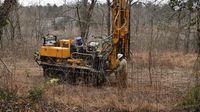UNC Asheville's Chancellor Kimberly van Noort has announced plans to develop the university's Millennial Campus properties, which include a beloved 45-acre wooded area on the south campus. The announcement, made in a March 7 letter to faculty and staff, has raised concerns among local residents about the ecological and community impacts of the development.
The Millennial Campus designation was approved in 2021 for over 200 acres of university property, providing regulatory flexibility to finance projects and collaborate with industry and the private sector. Since the arrival of excavators in January 2025, cutting new paths through the woods, community fears have intensified about the future of this cherished green space.
Chancellor van Noort outlined potential uses for the properties, ranging from affordable workforce and student housing, to facilities for research, education, sports, childcare, and entertainment. In a March 9 opinion piece published in Citizen Times, she emphasized, “It is clear that we will develop these properties,” although no specific decisions have been finalized.
This announcement has sparked backlash from community members, who have organized rapidly against the development. A Facebook group opposing the project has attracted 3,000 members, and a petition protesting the University’s plans is approaching 10,000 signatures. Residents, including Five Points Neighborhood Association President Chris Cotteta, feel emboldened by the chancellor's letter, which confirmed their suspicions about the future of the woods. “It wasn't hard to see the writing on the wall from just the actions that they took,” he remarked.
Concerns surrounding the future of the woods are compounded by ecological implications. As the urban forest is often referred to as “the woods”, it serves as a crucial habitat for various wildlife including bears, wild turkeys, and owls. Biologist David Clarke, a professor at UNC Asheville, highlighted that many research plots vital for studying carbon sequestration and invasive plant monitoring have already been destroyed during preliminary assessments, causing frustration among faculty. “Ecologically, it’s the last nice intact piece of forest that’s inside the city limits of Asheville,” Clarke stated, expressing concern for the future of the woods and the loss of its biodiversity.
The property has traditionally been a sanctuary for local residents, frequently used for dog walking, jogging, and observing wildlife. As reports showed Asheville lost 6.4% of its tree canopy between 2008 and 2018, the importance of maintaining such green areas in the city has garnered renewed emphasis.
As community members rally against this development, they echo concerns that their voices were not adequately heard in the planning process. Previous development plans at the university involved substantial dialogue with faculty and neighbors, but this time around, many felt blindsided by the sudden arrival of construction equipment. Van Noort referred to the Millennial Campus properties as one of the university's most valuable assets, asserting that developing these areas would enhance the university's financial impact on both students and the surrounding community.
The development plan under consideration is not yet finalized and requires approval from both the UNC Board of Trustees and the UNC System Board of Governors before moving forward. Roger Aiken, chair of the UNCA Board of Trustees, acknowledged that while no specific proposal has been presented, if a “better use” for the land that could bolster the university's revenue streams arises, it is their fiduciary duty to pursue it. Aiken said, “We honor the past, but we can't stay in the past.”
Local residents, including UNCA alum Elizabeth Pritchitt, questioned how the university shifted its focus from education to economic development. “I don’t know how UNCA got so far off track that it thinks that regional economic development is its primary mission, and not education,” Pritchitt said.
Kerry Graham-Walter, another neighbor of the woods, shared similar sentiments regarding the importance of urban green spaces, especially in the wake of recent ecological changes. “If the chancellor goes through with this, they will have to clear cut and bulldoze and do all of these things that will remove trees, eliminate wildlife habitat, create storm runoff situations, add to the heat of the city,” he cautioned, emphasizing the need to protect this urban forest as a vital resource for Asheville's resilience.
As discussions about the future of the woods continue, both sides express a desire for more engagement. Aiken noted that conversations have ceased since September to stabilize campus operations following the pandemic but are now looking to move forward again and explore opportunities on the table. Plans for listening sessions are being developed to facilitate community involvement in the process.
In media statements, UNCA Spokesperson Brian Hart confirmed that timelines will be informed by discussions with potential partners, as the university aims to provide greater benefits for local and regional community members through potential development efforts. He stated, “We believe there are other potential uses that will provide far more value and access to a broader group of local and regional community members who would benefit from its development.”
The future of the 45-acre wooded area remains uncertain as members of the community continue to advocate for its preservation. With both ecological and community interests at stake, the call for permanent protection is becoming louder, with many believing, as David Clarke pointed out, “It only takes once to destroy something.” Keeping these woods intact would require ongoing effort and commitment from both the university and the surrounding community.


